Purchase Order Worksheets
Automatically download perfectly formatted PO worksheets
Eliminate manual data entry
- Select products from the catalog
- Export a custom PO template with chosen products
Finish POs quickly so salespeople can focus on new deals.
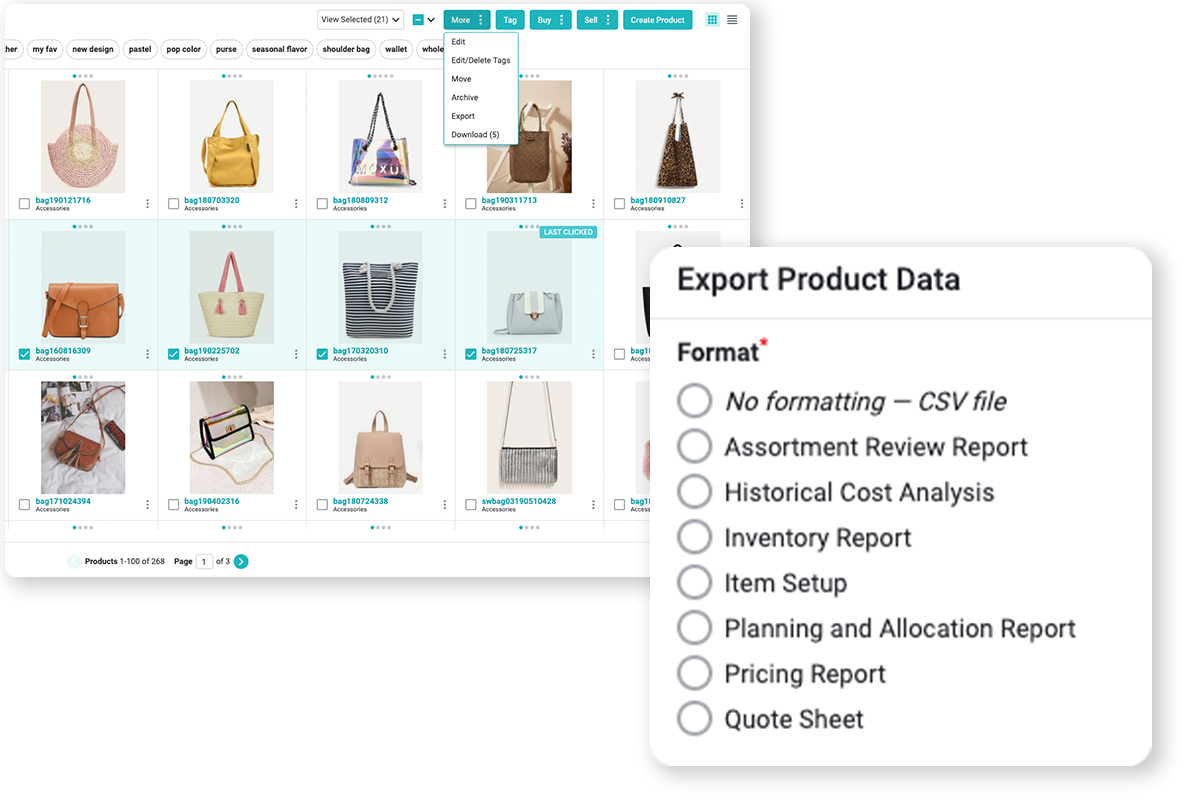
Create error-free POs in seconds instead of hours and generate perfectly formatted PO worksheets instantly.
Achieve perfect data accuracy
- Create purchase orders in minutes
- Utilize templates for all buyers
- Pull accurate data automatically
- Export complete information
Discover more about Catalog Management.
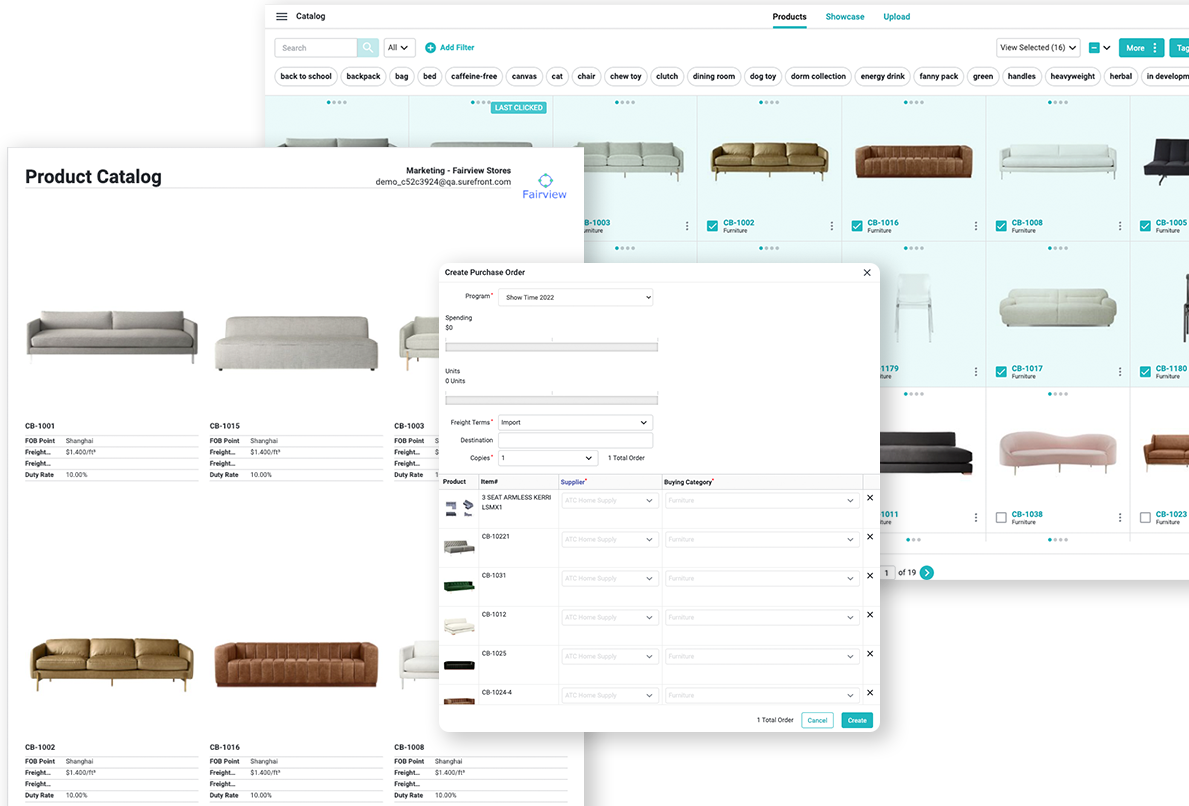
Slash weekly data‑entry hours by 80%, freeing up your sales team to close more deals instead of wrestling with spreadsheets.
Manage complex information
- Effortlessly handle complex data and formatting
- Slash weekly hours spent on manual data entry
- Give sales teams more time to land deals
Discover more about Order Management.
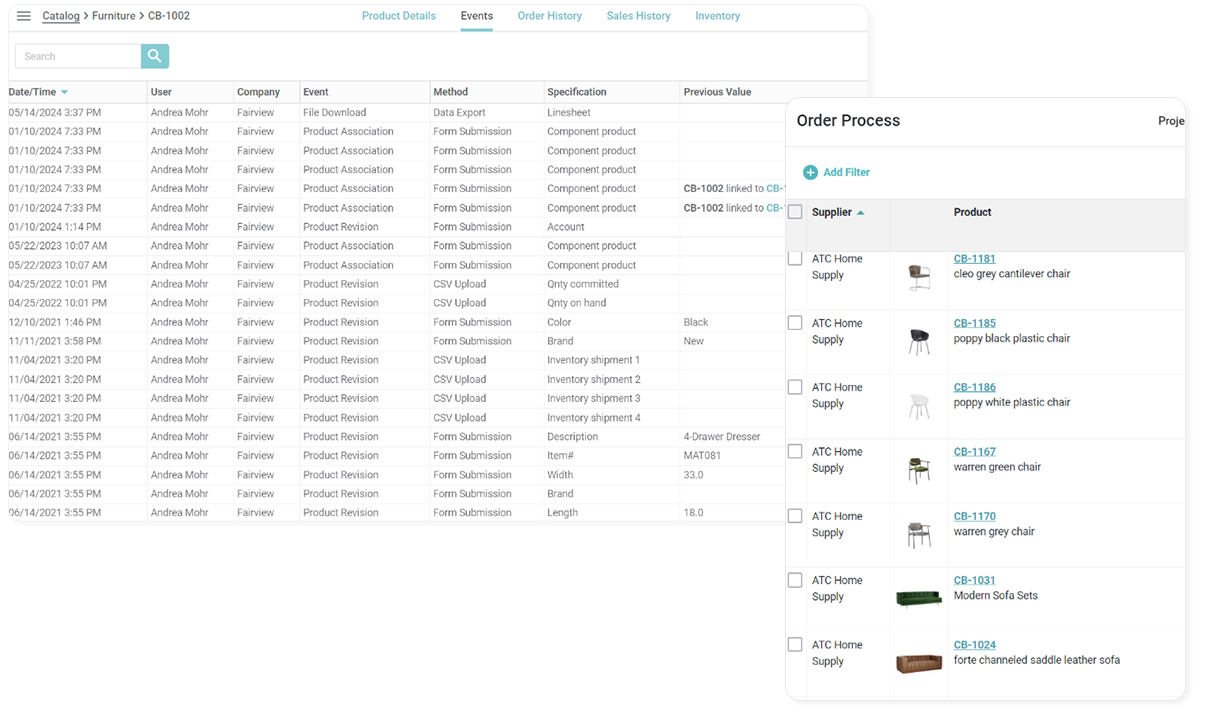
Gain full visibility into PO progress in real time, giving you transparent supply-chain tracking from creation to fulfillment.
Track order progress
- Automate buy-side and sell-side tasks
- Initiate buy orders for vendors
- Track as the order progresses to the retailer
- Gain total visibility into supply chain processes
Discover more about Order Management.
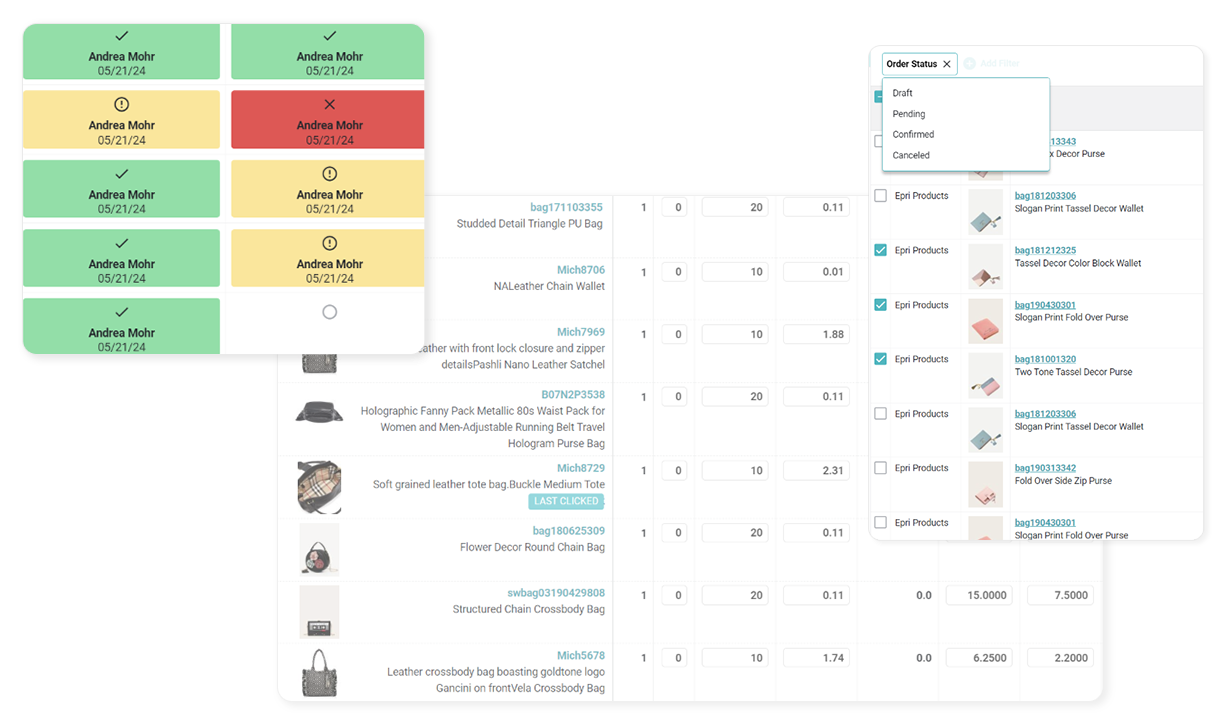
PO Worksheet Template Examples
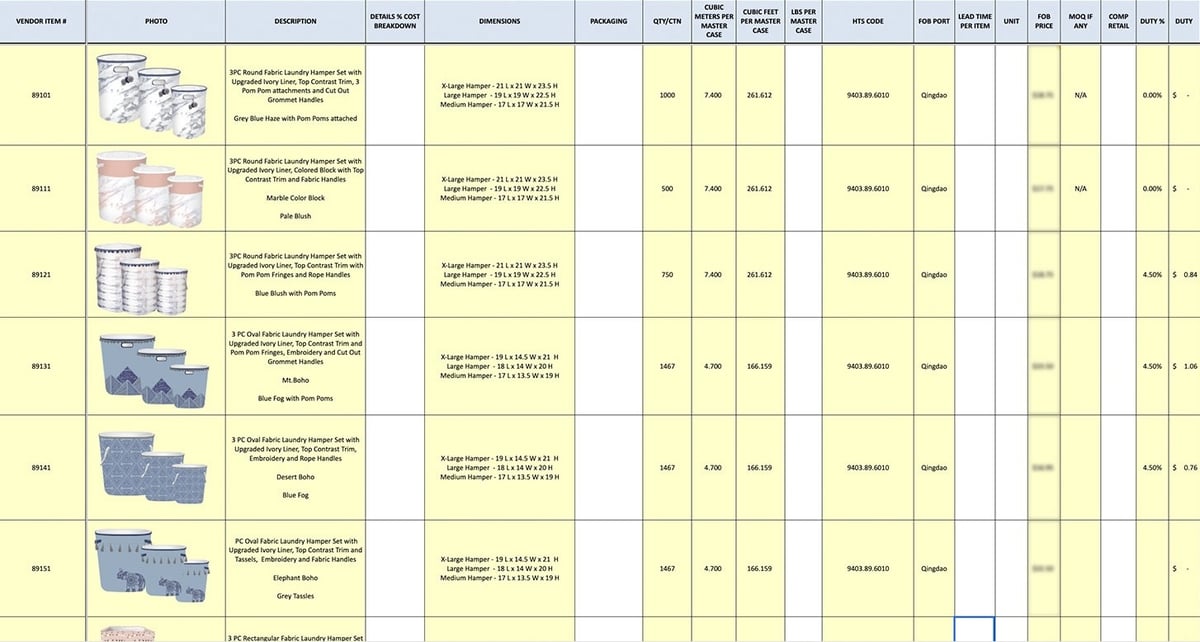
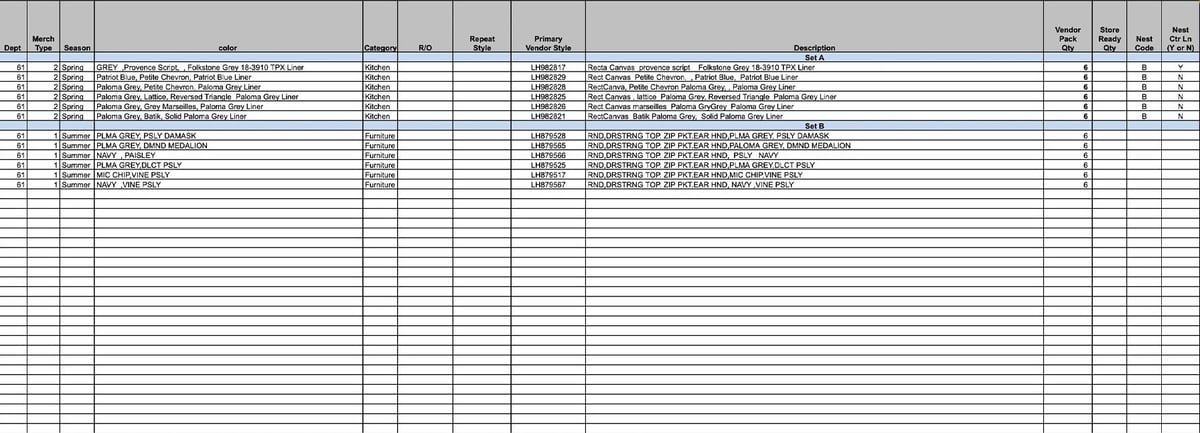






FAQs
A purchase order (PO) is generated by a buyer to engage a seller in acquiring particular goods or services. The primary aim of a PO is to formalize the transaction specifics, enabling the seller to initiate the production and delivery procedures for the designated goods and services.
Purchase orders hold significant importance for both retailers and vendors. Retailers rely on them for inventory replenishment and transaction documentation, while vendors utilize them as a foundation for manufacturing, product shipping, and sales tracking.
Completing a purchase order signifies the concluding phase of the supplier-to-retailer sales procedure. Once the retailer accepts the order, the supply chain fulfillment process commences.
The purchase order (PO) number serves as a crucial identifier printed on shipping crates. Analogous to a tracking number, it represents a bulk quantity of goods rather than individual packages. Upon receiving a shipment at its warehouse, a retailer cross-references the PO number on the shipping boxes with the corresponding purchase order form.
Essentially, the PO number acts as the unique identifier for the order. Once finalized, it becomes a universally recognized reference within the supply chain. In case of shipment delays or issues, vendors can easily communicate with the shipping company by providing the PO number, enabling the shipper to locate and address the order promptly.
Purchase orders are not legally binding. Retail buyers retain the right to cancel a purchase order contract, even if the vendor has initiated fulfillment. Canceling entails the vendor shouldering the financial consequences of the cancellation.
Surefront automates purchase offers using a simple two-step process. First, select products from your catalog within Surefront's platform. Then, export a custom purchase order template containing the chosen products.
By utilizing Surefront's PIM as a centralized source of product data, you can easily generate purchase order forms by selecting products and letting the software automatically map the data into the template. This automation saves time and effort, enabling you to quickly create accurate purchase orders without manual data entry.
Order Management Software, or an order management solution (OMS), is a tool or system retailers use to efficiently manage and process customer orders. From point of sale to fulfillment, the best order management software serves as a centralized hub that consolidates order information, inventory data, and customer details.
This allows retailers to streamline and automate various aspects of the order management process.
The primary functions of Order Management Software include:
-
Order processing
Order management software facilitates efficient processing of each purchase order. It captures order details, like product information, quantities, customer information, and payment details. This information is then stored and managed within the order management system.
-
Inventory management
Order management software provides visibility into inventory levels in real-time, across multiple channels and locations. It helps retailers track stock availability, allocate inventory, and prevent overselling or stockouts.
Order management systems may also support stock synchronization between online and offline channels, so you'll always know your exact inventory levels of in-demand products.
-
Order fulfillment
Order management systems help manage the fulfillment process by automating order routing, picking, packing, and shipping. Some even integrate with shipping carriers, so you can generate shipping labels, track shipments, and provide customers with tracking information for online and offline orders.
-
Order tracking and customer communication
Order management software lets retailers provide customers with real-time order tracking information. It automates status updates, triggering notifications to customers at various stages of the order lifecycle.
Your order management system might even facilitate communication with customers regarding order changes, delays, or returns –– it all depends on your solution provider.
-
Multi-channel order management
Order management helps manage sales from various channels, including online stores, mobile apps, marketplaces, and brick-and-mortar stores. The best order management systems provide a centralized view of all customer orders, regardless of the channel. Some even have shipping integrations to facilitate shipping management.
All these features combine to ensure a consistent shopping experience for customers, and efficient order management for the retailers that serve them.
-
Returns and exchanges
Order management software helps retailers manage returns and exchanges from sales orders. It does this by streamlining supply chain processes for handling reverse logistics. It tracks returned products, manages inventory adjustments, and facilitates refunds or replacements for unhappy customers.
-
Analytics and reporting
An order management system will often include reporting and analytics features. These features provide insights into key metrics like: order volumes, order statuses, inventory levels, customer behavior, and more. This helps retailers make more informed purchasing decisions, identify industry trends, and optimize their order management processes.
Order Management Software was designed to boost operational efficiency and reduce the errors that come from manual tasks. By centralizing and automating order management activities, it helps retailers make more informed business decisions. Thus enhancing the customer experience with more in-demand inventory. No more understocks, overstocks, or lost orders.
Order management tools let you effectively manage your order lifecycle, inventory control, and fulfillment processes across every channel your team uses to sell products.
Order Management Software (OMS) streamlines sales orders and purchase orders for customer orders in myriad ways. Many offer shipping management and supplier management tools. Accounting software, although less common, can also be part of your management software suite.
Additional features include:
-
Centralized order management
Order management software is a centralized hub that consolidates order information from various order management channels, including online stores, marketplaces, and brick-and-mortar locations.
It allows retailers to manage all orders from a single platform, eliminating the need for manual data entry across different systems and reducing the risk of human error.
-
Automated order processing
An order management system automates how orders are processed by capturing and validating order details, including: product information, customer details, and payment information.
Inventory management software eliminates manual processing tasks, thus reducing the potential for human errors. Automation also speeds up the order entry process, leading to faster fulfillment across multiple marketplaces.
-
Inventory visibility and allocation
An order management system provides real-time visibility into inventory levels across channels and locations. It helps retailers manage and report on stock availability, and helps to allocate inventory for incoming orders.
With accurate inventory information at their fingertips, retailers can prevent overselling, avoid stockouts, and optimize order fulfillment.
-
Order routing and workflow automation
Order management software automates order routing to fulfillment locations based on preset rules or algorithms. It intuitively distributes orders to the most suitable warehouses, stores, or drop-shipping partners. Workflow automation within the order management system streamlines order fulfillment by assigning tasks, generating pick lists, and managing the sequence of activities throughout the order fulfillment process.
Some inventory management software offers "route allocation" to help warehouse management find the right delivery driver to quickly get products to their destinations.
-
Integration with shipping carriers
Order management features often have shipping integrations with logistics providers and shipping carriers. This allows retailers to print shipping labels, calculate shipping costs, and track shipments directly from the order management system. The integrations eliminate the need for manual data entry, reduce errors, and expedite the shipping process.
-
Order tracking and customer notifications
An order management system can enable retailers to provide real-time order tracking information. It automatically updates order statuses and triggers notifications to customers at various stages of the order lifecycle.
So customers receive timely updates on order confirmation, shipment tracking, and delivery notifications.
-
Returns and exchanges management
An order management system helps retailers efficiently manage returns/exchanges with shipping integrations that handle reverse logistics. It tracks returned products, manages inventory adjustments, initiates customer refunds or replacements, and automates communication throughout the return process.
-
Reporting and analytics
Order management software usually includes reporting and analytics capabilities to provide insight into order volumes, inventory levels, and more. Retailers can generate reports to monitor warehouse management information, such as order processing times and bottlenecks.
Thus helping retailers with data-driven decision making that optimizes their order management and fulfillment processes.
Order management software and inventory management software reduces manual work, minimizes human errors, improves order accuracy, and enhances overall efficiency –– helping retailers to meet customer expectations, fulfill orders faster, and provide a seamless shopping experience on every channel.
Case Studies

Fine Jewelry
West coast fine jeweler shaves weeks off production time, days off line sheet development, and hours off vendor communication and SKU management.

Home Décor
Surefront enables industry-leading productivity and unparalleled sales. Tasks that formerly took JIA HOME two weeks now take just 30 minutes.

Home Furnishings
Surefront’s PLM helped the Handy Living team reduce the average new product development cycle from 6-12 months time to 3 months per product.
From Our Blog

Supplier-Retailer Collaboration: Building Stronger Partnerships for Merchandising Success
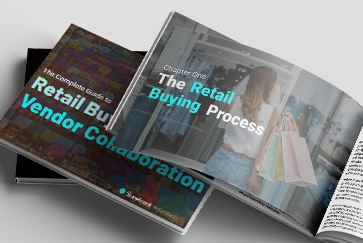
The Retail Buying Playbook: How Retail Buying is Evolving

What Is the Role of a CRM Software Distributor?
Want error-free POs and full PO visibility every time?

